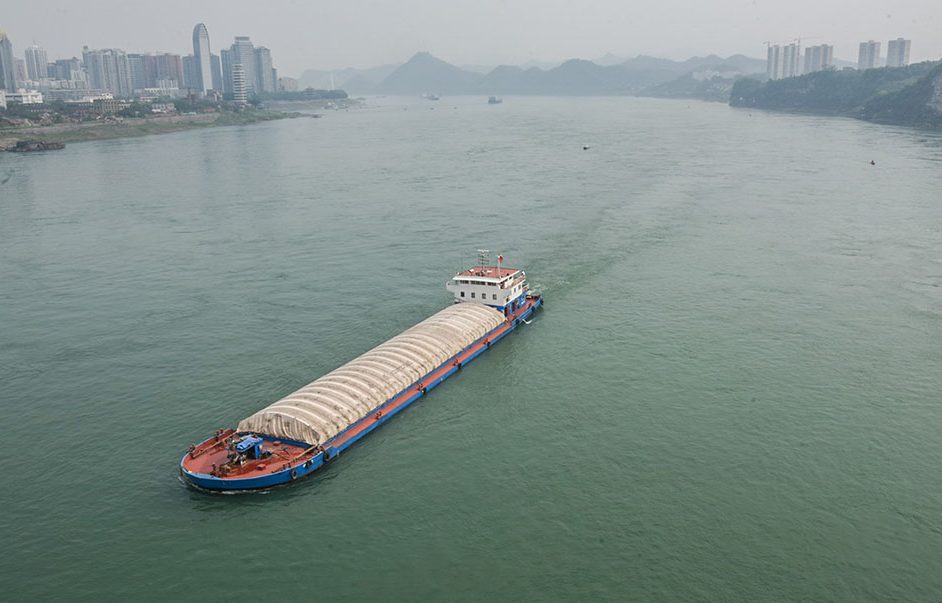East Asia Blog Series
A Legislative Framework for the Sustainable Development of the Yangtze River
Au Shion Yee 16 Mar 2022
The Yangtze River Protection Law sets a precedent for legislating policies that support the sustainable development and management of rivers.
Overview
Asia’s longest river, the Yangtze River in the PRC, has been facing environmental challenges brought about by rapid economic development and increasing population pressure. Pollution, industrialization, deforestation, unsustainable farming practices, biodiversity and habitat loss, and overexploitation of natural resources threaten the health of aquatic and riparian ecosystems. Failure to systematically curb these threats poses serious obstacles to achieving green and inclusive development.
In 2018, the PRC government saw the urgent need 1) to improve the Yangtze’s ecosystem within a framework of coordinated protection across the basin, 2) to establish a market-based and diversified ecological compensation mechanisms, and, 3) to uphold the protection of the river through the rule of law. These elements were formalized into a legislative framework now known as the Yangtze River Protection Law that took effect on 1 March 2021.
This article summarizes how this law can strengthen environmental protection and restoration of the Yangtze River basin, support the efficient use of resources, ensure harmony between people and nature, and contribute toward overall sustainable development.
This landmark legislation supported by the ADB 1 sets a precedent for developing legislative frameworks supporting the protection and management of other river basins in the PRC. This also serves as a blueprint for developing countries facing similar environmental challenges.
The legislative process for the development of this law involved solicitation of public comments. A total of 83 recommendations were submitted during the first round of public consultation while 17 recommendations were submitted during the second round.
This article is adapted from the study Yangtze River Protection Law of the People’s Republic of China: Overview of Key Provisions and Policy Recommendations published by ADB.
Key Features of the Framework
The Yangtze River Protection Law provides for the following:
The Yangtze River Protection Law stipulates the establishment of a national river basin coordination mechanism to provide centralized guidance and overall coordination of efforts. This includes creating a basin-wide information sharing platform, establishing local coordination mechanisms, and forming an expert advisory committee for professional consultations on major development strategies, policies, and master planning.
This law defines government responsibilities, extensively covering areas, such as river basin planning and layout; green development strategies; resource development, utilization, and conservation; pollution prevention and control; environmental restoration; and financial input for environmental protection, such as ecological compensation. The State Council is required to implement the accountability and evaluation system for environmental protection of the river. The central government and its offices will be responsible for evaluating the progress of local (e.g., provincial and county) governments toward environmental protection and restoration goals.
The Natural Resources Department of the State Council (as well as other relevant departments) is mandated by this law to carry out surveys of the different natural resources in the Yangtze River basin. This is to establish a basic database of these natural assets (i.e., land, minerals, water flows, forests, grasslands, and wetlands); conduct assessments of resource and environmental carrying capacities; and report their status. Survey results will determine the appropriate industrial structure and layout in the river basin, taking into consideration its ecosystems and environmental carrying capacities to give natural ecosystems the time and space to recover.
The law also promotes improved capabilities on disaster prevention, mitigation, resilience, and relief. It requires the strengthening of monitoring, forecasting, early warning, defense, emergency response, recovery, and reconstruction systems for the management of natural disasters, such as floods, droughts, forest and grassland fires, geological disasters, and earthquakes. The provincial governments in the river basin are required to develop the environmental zoning and management plan and the environmental access list based on the state of the ecological environment and resource utilization within their administrative regions.
The Yangtze River Protection Law adopts principles to support green development through measures to improve overall coordination and river basin governance, use of science-based planning, and adoption of innovative technologies. It promotes environmental protection and ecological restoration goals in parallel with a green development approach.
This law incorporates specific provisions on the application of ecological compensation policy measures. These include (i) establishing a compensation system for ecological protection, (ii) increasing financial transfer payments to compensate areas of ecological importance (e.g., sources of the Yangtze River mainstream and its major tributaries) and key water conservation areas in the upper reaches, and (iii) mandating the development of specific market-based measures to support policy reforms.
The Yangtze River Basin Environmental Supervision and Administration Agency, an agency under the Ministry of Ecology and Environment, is primarily responsible for environmental supervision, administrative law enforcement, and all related basin-wide management and monitoring activities. Strengthening its law enforcement capacity leverages its role in the overall supervision of pollution control and ecological protection. Sufficient fund and resources will enable it to effectively carry out its expanded responsibilities.
Recommendations
Efforts to promote law enforcement will remain critically important to ensure that the maximum extent of desired outcomes is achieved. As with any new legal framework, this law will be subject to ongoing review to adapt to varying circumstances and practical needs that arise from its implementation.
At this point, the Yangtze River Protection Law has no clear provisions on climate change or technical guidelines for law enforcement. Land use and spatial planning for the Yangtze River basin needs to consider climate change impacts. The specific plans and goals may be subject to review and update depending on the climate change planning scenarios, the economic growth projections, and the state of environment and ecological systems.
Article 79 of this law stipulates that citizens, legal persons, and unincorporated organizations have the right to access, upon application, information about the river basin in accordance with the law. Information disclosure will need to be supported by an integrated information sharing platform to assist basin-wide spatial planning and decision-making. This can be an avenue to share knowledge and inform legislative frameworks planned for other river basins in the PRC and other countries.
To maintain the Yangtze River Protection Law’s momentum, an implementation plan that is regularly reviewed is critical. It should also specify the division of responsibilities of the relevant departments of the State Council and the provincial governments in the Yangtze River basin. Standards and targets should also be reviewed with each update of the plan to remain relevant.
1 The ADB provided technical support and policy advice in the formulation and design of the Yangtze River Protection Law, preparing a series of policy recommendations that were submitted to the Ministry of Ecology and Environment (MEE) and the National People’s Congress (NPC).
References
Asian Development Bank (ADB). 2021. Yangtze River Protection Law of the People’s Republic of China: Overview of Key Provisions and Policy Recommendations. Manila.
Author

Au Shion Yee
Senior Water Resources Specialist, East Asia Department, ADB
This blog is reproduced from Development Asia.


